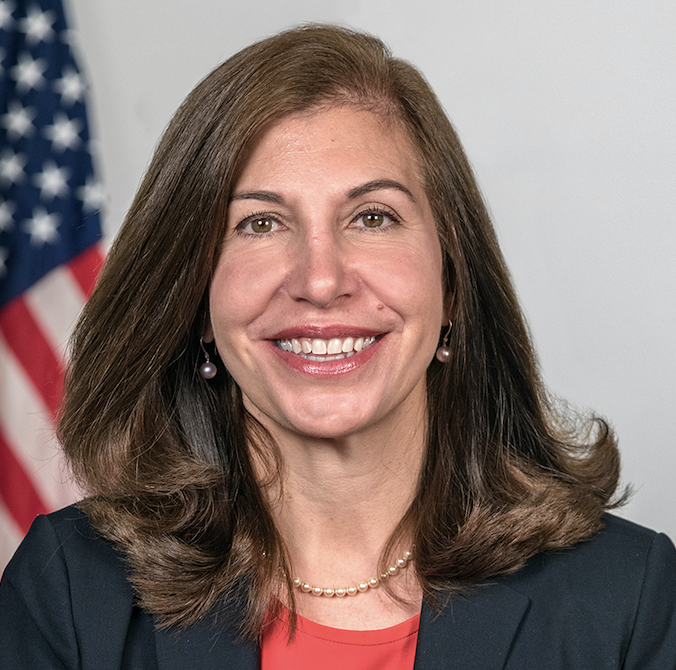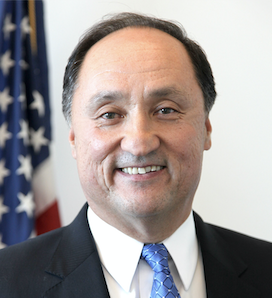This blog post contains the following Shifting from Low-Value to High-Value Work Cross-Agency Priority (CAP) Goal updates:
- Note from Mike Rigas, Deputy Director for Management at the Office of Management and Budget (OMB) and Emily Murphy, Administrator of the General Services Administration on “Significant Progress on Shifting from Low-Value to High-Value Work”
- Message from CAP Goal Leaders Allison Brigati and Gerard Badorrek on “Liberating Federal Employees from Low-Value, Transactional Work “
Significant Progress Made in the Shift From Low to High-Value Work
As a key component of the President’s Management Agenda (PMA), the CAP Goal focused on Shifting from Low-Value to High-Value Work pursues the critical mission to eliminate outdated and redundant requirements. The Shifting from Low-Value to High-Value Goal team has produced a number of recent accomplishments, including:
- Savings. Billions of dollars in realized and anticipated savings, and hundreds of thousands of Full -Time Employee (FTE) hours shifted to higher-value work based on over 100 transformation initiatives in agencies. Highlights include:
- 50+ initiatives leveraging broad-scale process improvement and standardization.
- 30+ initiatives using robotics process automation (RPA), artificial intelligence (AI), and/or other innovative software.
- 20 initiatives focused on the digitalization of processes within an agency.
- Additional information on these initiatives is in the Leaner Government Report OMB published in October 2019.
- Identifying Burdensome Reports for Elimination. Time, money, and energy is lost complying with outdated, redundant, and unnecessary Congressional reporting requirements. Agencies have identified hundreds of Congressional reports for elimination or modification.
- Establishing a Baseline for Low Value Work. For the first time, the Goal team gathered feedback from employees on the amount of low-value work performed each week. Over 243,000 respondents across 24 agencies responded. Findings included:
- 13.2% of employee time (on average in a typical 40-hour workweek) is spent on work employees consider low-value.
- Extrapolated government-wide, this represents approximately 500 million hours spent each year performing low-value work.
Recalibrating the Strategy for FY20
As the June 2020 Progress Update conveys, OMB is recalibrating the Goal strategy to incorporate a greater focus on workload automation and reduction. Our four-prong strategy is summarized below, and detailed within the June 2020 Update.
- Workload automation: Facilitate agency adoption of innovative automation technologies.
- Workload reduction: Foster agency identification and delivery of impactful workload reduction initiatives.
- Requirement elimination: Eliminate outdated reporting requirements.
- Burden assessment: Institute assessment of burden as part of OMB guidance development.
Given the critical role the General Services Administration (GSA) will play in advancing these initiatives, we are also announcing new CAP Goal Leaders, GSA Deputy Administrator Allison Brigati and Chief Financial Officer Gerard Badorrek. We recognize the great work, support, and leadership provided by our previous partners at the Department of Housing and Urban Development.
We welcome the partnership with our new partners Allison and Gerard as this important work continues. Below is a message from the newest leaders of this Goal Team.
Sincerely,
Mike Rigas and Emily Murphy
Liberating Federal Employees from Low-Value, Transactional Work

Allison Fahrenkopf Brigati
General Services Administration,
Deputy Administrator

Gerard Badorrek
General Services Administration,
Chief Financial Officer
In our experience working with staff at all levels of GSA, federal employees are highly dedicated and uniquely mission-oriented. Ask them what they find most frustrating about their jobs, and the reply is often any task, process, or requirement that distracts their focus from mission critical work. In many cases, these tasks and processes are manual, repetitive, and low-value – indicating they are not only distracting, but also absorb an inordinate amount of employee time.
In addition to the employee engagement impact of low-value work, there is also serious organizational impact including workforce capacity, productivity, and results. With the current pressure on the Federal Government to continue doing more and meet new demands such as currently in response to the COVID-19 pandemic, low-value, repetitive work will no longer just be a nuisance, but instead an operational risk to agencies fulfilling their goals.
In private sector organizations, managers and executives are constantly on guard for low-value work and are always looking to consolidate, optimize, and improve. Why? Because shareholders demand streamlined operations that produce value. The American people apply the same pressure to federal agencies, and want the government to be effective stewards of their tax dollars. This important mandate is at the crux of the President’s Management Agenda, Cross Agency Priority (CAP) Goal, Shifting from Low-Value to High-Value Work.
Shifting from Low-Value to High-Value Work empowers all agencies to identify ways to reduce the burden placed on their workforce and their partner agencies by low-value, transactional work. At the same time, it calls on the government to embrace a corporation-like approach to managing innovation. Rather than each agency independently solving the same problems associated with adopting innovative technologies, it calls for sharing of best practices, and eliminating common challenges with common solutions. The Federal RPA Community of Practice (CoP) is an example of these principles put into action with over 1000 members from more than 50 agencies working together to accelerate the adoption of RPA government-wide.
As the executive sponsors of Shifting from Low-Value to High-Value Work with our partners at OMB, we have put together an aggressive plan of elimination, optimization, and automation (EOA), to move the needle on liberating the federal workforce from low-value work. 1 This plan will both facilitate individual agencies to identify and mitigate internal challenges, as well as foster cross-government solution development and results.
A large portion of the Shifting from Low-Value to High-Value Work action plan is dedicated to accelerating the government-wide adoption of emerging technologies like Robotic Process Automation, Intelligent Automation, and Artificial Intelligence. These new digital workers can complete the tasks that distract employees from mission critical work, and create significant capacity for higher value analytics, management and planning functions.
The Shifting from Low-Value to High-Value Work Team has already published a comprehensive RPA Playbook, conducted multiple RPA capability-building webinars, and completed surveying to establish a baseline level of federal automation adoption. Going forward, the Federal RPA and AI Communities of Practice will work with the Shifting from Low-Value to High-Value Work Team to help agencies remove the technology and management challenges that can slow adoption of automation technologies. The CoPs will also augment their knowledge sharing efforts through robust federal use case inventories, executive guides and playbooks, and agency-level mentoring.
As Bill Gates correctly stated, “automation applied to an inefficient operation will magnify the inefficiency.” This is why we expanded Shifting from Low-Value to High-Value Work to encompass elimination and optimization. We will be developing an EOA primer based on our experience conducting the initiative across GSA, including identifying opportunities, conducting rapid improvement and standardization events, facilitating effective program management, and measuring and reporting initiative results. The Shifting from Low-Value to High-Value Work team will create a toolkit for agencies that incorporates best practices and lessons learned, enabling rapid adoption within interested agencies.
Finally, we encourage all agencies to get their employees involved in Shifting from Low-Value to High-Value Work initiatives. Employee-led transformations are generally more successful and enduring, and can take advantage of their deep subject matter expertise. Whether through surveying, focus groups, process consultations, or other feedback mechanisms, employees want to be heard and have immense value to add. We should let them lead their own liberation from low-value work.
We are excited to take on this challenge and look forward to collaborating with federal leaders across government. Together, we can shape the high-value work environment of the future.
-
The EOA effort began in the General Services Administration Office of the Chief Financial Officer and is included as a case study. ↩
